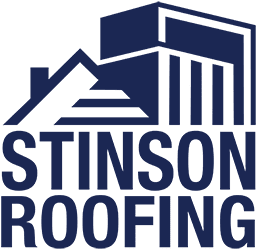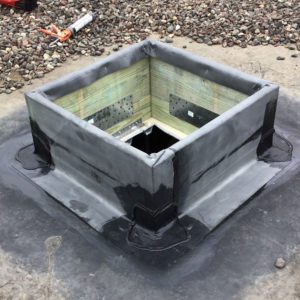Spring Maintenance Tips for a Commercial Flat Roof
Stinson Services has partnered with Guy Buonincontro of Mule-Hide to discuss spring maintenance for a commercial flat roof. He explains the best practices of commercial roof maintenance, when to get inspections and the importance of them, what areas of the flat roof to inspect and more!
Best Practices for your Commercial Flat Roof

Q: What are the best practices when it comes to your commercial roof in the springtime?
A: The most important thing in the spring is to make sure you’re walking your roof. Making sure that debris from the winter and the fall isn’t clogging or obstructing the water flow to your drains or scuppers because what that will do is backup the water on the roof assembly. That’s where havoc starts happening through the freeze and thaw.
Q: How often should you complete a roof inspection on a commercial property?
A: I would say minimum once a year but I prefer twice a year. The most of the movement we see is between that November and March. I think November and March/April are the two most crucial times to walk that roof.
Q: Does a physical inspection need to be completed or could an inspection take place utilizing a drone?
A: You could definitely see some of the larger issues with a drone, because you would see the piling up of leaves or a plastic bag or possibly something else on the roof that’s obstructing the water. The best is to walk the roof, checking all the details and walking the perimeter to make sure things aren’t pulling away or stretching.
Q: Is there anything in regards to outlets, electrical or mechanical equipment on the roof that should be checked in the spring?
A: Most of your electrical and mechanical equipment on the roof are usually held off of the roof assembly on what’s called a curb. The curb needs to be inspected because that’s where the roof membrane can pull in and bridge. Through expansion and contraction the roofing material starts to get thin. That’s where you can wind up with pin holes or tears. So, making sure that all the accessories: outside corner, inside corner, pipe boots are in good working order is crucial.
Q: How has the pandemic affected materials in the commercial roofing industry?
A: There are extreme shortages in TPO, PVC and ISO. We’re also starting to see shortages on all of the bonding adhesives that are used. This all goes back to resin that is in very short supply. The supply chain is maxed out. There are limited amounts of products that are available. EPDM is in a better spot than TPO & PVC but there’s still not enough EPDM in the marketplace to take up all the lack of TPO & PVC that’s needed.


0 Comments